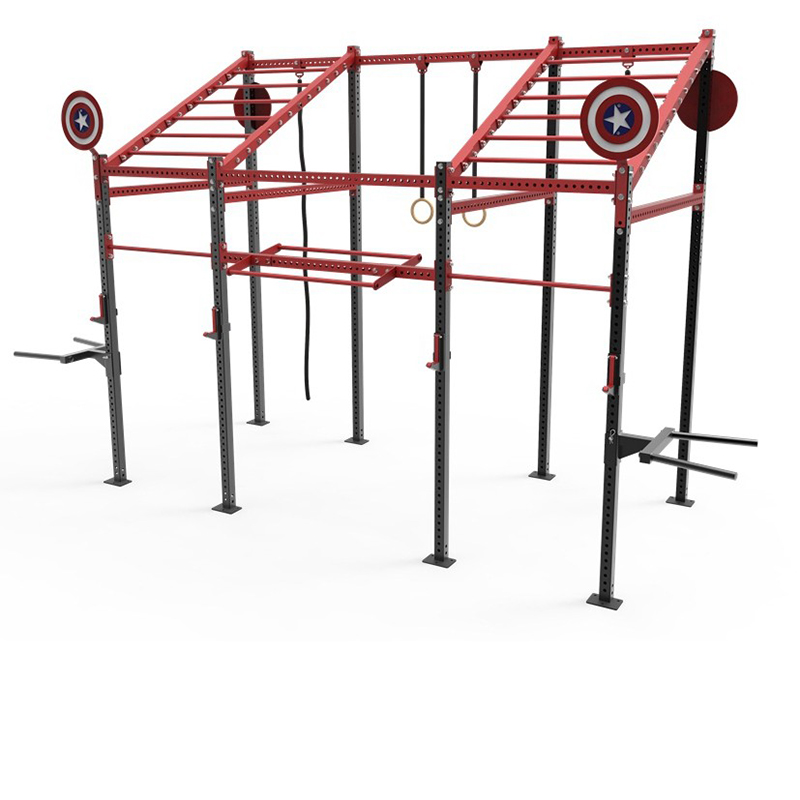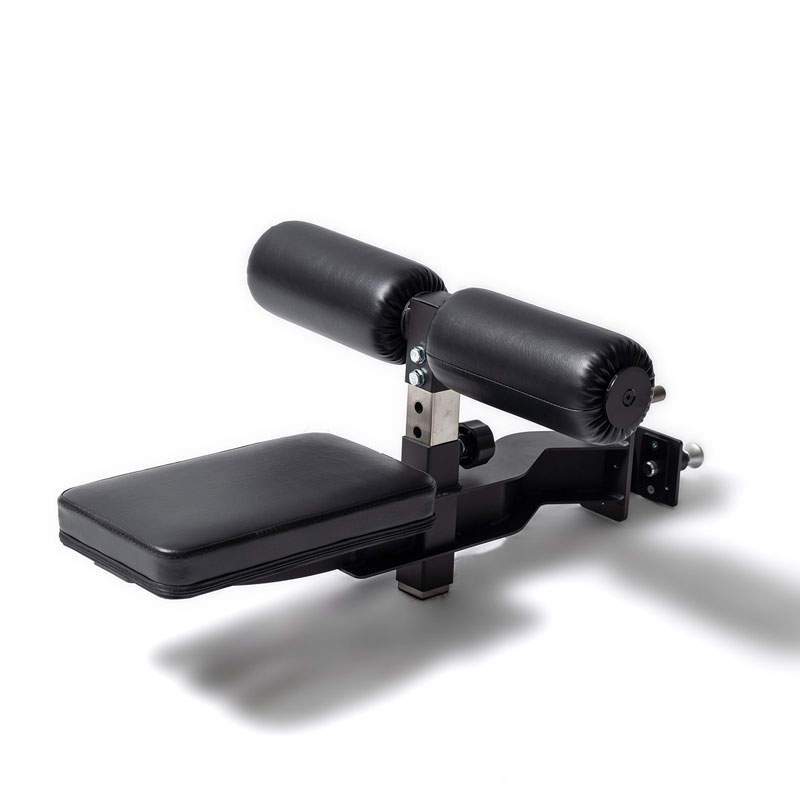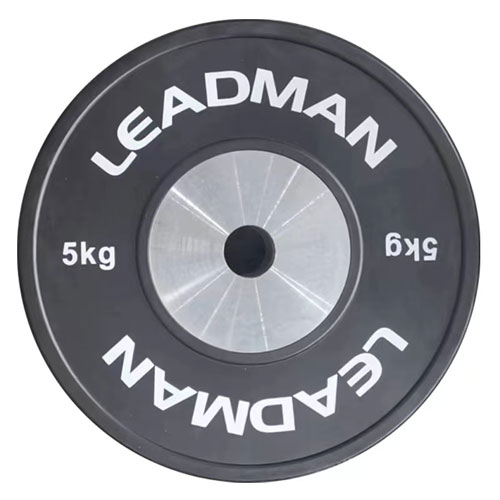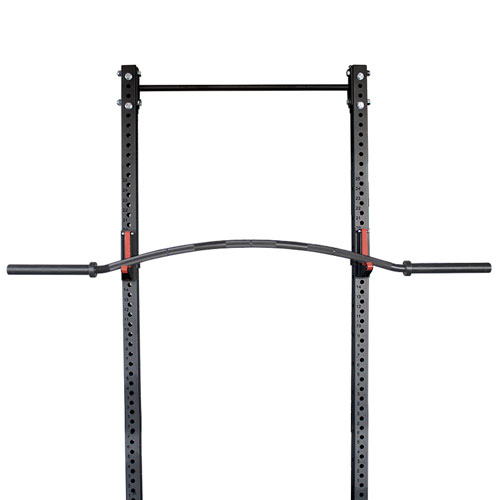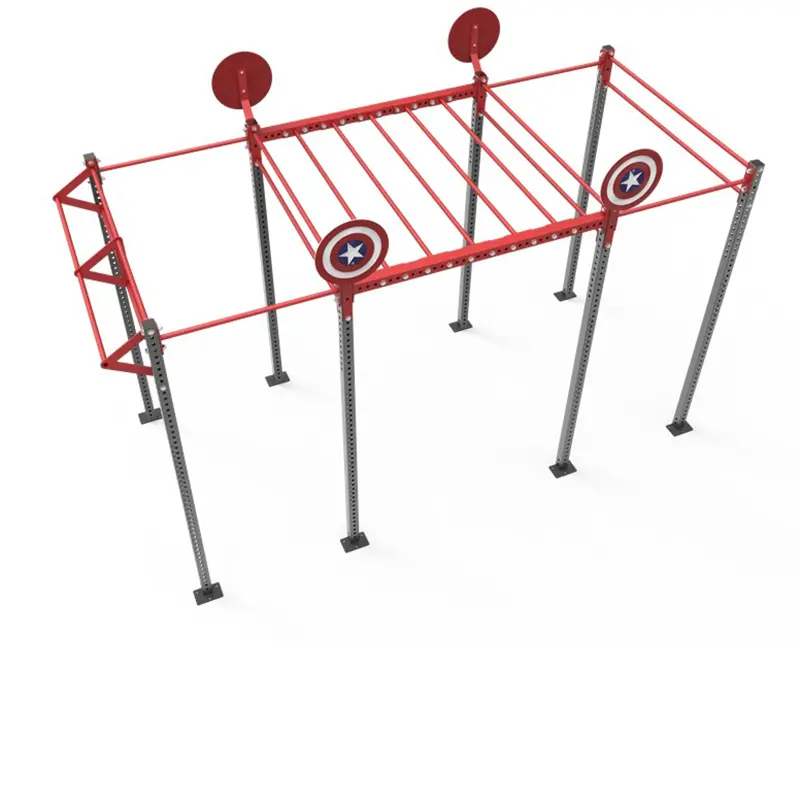Quelle est l'importance d'utiliser un tapis sous un banc de musculation ?
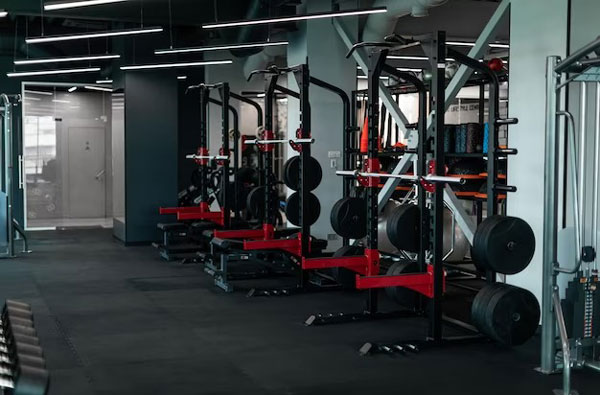
Imagine this: You're finally setting up your dream home gym, meticulously choosing weights, a sturdy weight bench, and… a gaping hole in your plan. That nagging feeling in the pit of your stomach telling you something's missing? It might be a mat. The creaking of your hardwood floors as you lower that heavy barbell, the worried glance at your expensive Persian rug, or the impending dread of a neighbor's noise complaint – these are all scenarios that highlight the importance of considering a mat for your weight bench. So, the core question: Is a mat necessary under a weight bench? The answer, as we'll explore, is nuanced. A mat under a weight bench isn't always essential, but offers significant benefits depending on your situation and priorities. This guide will help you determine if a mat is a crucial investment or an optional extra.
Protégez vos sols : Prévenir les dommages coûteux
Your flooring is a significant investment, and damage from a weight bench can be surprisingly extensive and expensive to repair. The type of flooring you have drastically affects its vulnerability.
- Bois dur : Prone to scratches, dents, and indentations from dropped weights or the constant pressure of the bench's legs. Repairs can involve costly sanding, refinishing, or even replacing entire planks.
- Tapis : While seemingly more forgiving, heavy weights can flatten the pile, creating permanent indentations. Moisture from sweat can also seep into the padding, leading to mildew and unpleasant odors.
- Carrelage :Généralement plus résistants, les poids échappés peuvent néanmoins ébrécher ou fissurer les carreaux, ce qui entraîne des remplacements coûteux.
- Béton :Le plus résistant, mais même le béton peut se tacher et se creuser avec le temps, surtout avec des poids plus lourds.
A simple mat can act as a buffer, absorbing impact and preventing these costly damages. Imagine replacing a damaged hardwood floor: the labor, material costs, and disruption to your home can easily run into hundreds, even thousands, of dollars. A preventative mat, on the other hand, costs a fraction of that and offers long-term protection.
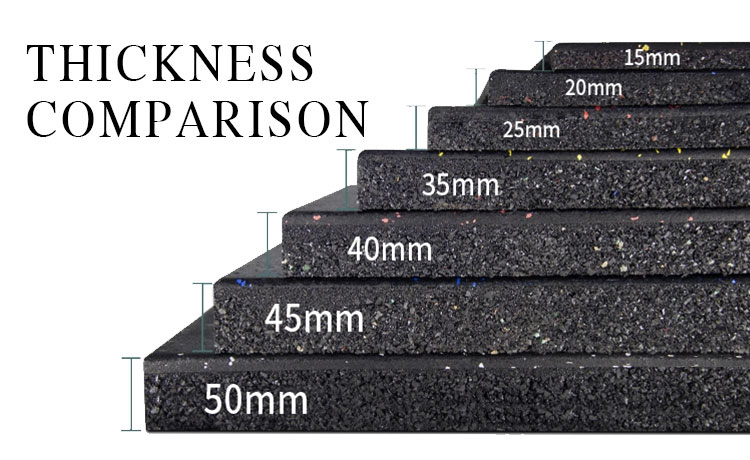
Reducing Noise and Vibration: A Harmonious Home Gym
L'haltérophilie génère inévitablement du bruit et des vibrations, en particulier avec des poids plus lourds et un entraînement intense. Le bruit des poids, le frottement du métal et les vibrations qui se propagent dans le sol peuvent perturber votre foyer et, surtout, vos voisins.
Repeated loud noises can lead to friction with roommates or neighbours, potentially escalating into complaints or even legal issues. A thick, well-designed mat significantly reduces noise and vibrations. Materials like rubber and high-density foam are particularly effective at absorbing impact sound.
Consider the scenario of living in an apartment building. The sounds of your workout, amplified by the building's structure, can travel easily to neighbouring units. A mat can be the difference between maintaining harmonious relationships with your neighbours and facing complaints or conflicts.
Améliorer la stabilité et la sécurité : Un entraînement plus sûr
A mat doesn't just protect your floors; it also enhances the stability and safety of your weight bench. Uneven surfaces can cause the bench to wobble, increasing the risk of accidents. A mat provides a level, stable base, preventing slippage and ensuring a secure workout. This is especially important during demanding exercises like bench presses or overhead presses, where stability is paramount to avoid injury.
A stable bench reduces the chance of the bench shifting during heavy lifts, minimizing the risk of dropped weights or injuries. The increased safety benefits not only the user but also protects the surrounding environment from damage caused by accidental weight drops.
Types de tapis pour bancs de musculation : Trouver l'ajustement parfait
The market offers a variety of mats specifically designed for weightlifting. Choosing the right one depends on your needs and budget.
- Tapis en mousse :Abordables et relativement légers, ils offrent un bon amortissement et une bonne réduction du bruit. Cependant, ils peuvent être moins durables que d'autres options et peuvent se comprimer avec le temps.
- Tapis en caoutchouc : More durable and provide superior shock absorption and noise dampening. They're more expensive but offer long-term value.
- Tapis de puzzle : Interlocking tiles that can be customized to fit any space. Easy to clean and replace individual tiles if damaged. However, the seams can be a tripping hazard.
- Tapis de yoga : Generally thinner and less durable than dedicated weightlifting mats. Suitable for lighter weight training but not ideal for heavy lifting.
Consider the size and thickness of the mat. It should extend beyond the base of the weight bench to provide adequate protection and stability. Thicker mats (at least ½ inch to 1 inch) offer better cushioning and noise reduction.
(Inclure des liens vers des tapis recommandés sur Amazon ou d'autres détaillants ici).
When a Mat is Absolutely Necessary: Non-Negotiable Situations
Dans certaines situations, un tapis n'est pas seulement recommandé, il est absolument nécessaire.
- Appartement vivant :Le risque de plaintes pour nuisances sonores et de dommages aux sols partagés rend le tapis indispensable.
- Planchers délicats : Hardwood, parquet, or tiled floors require extra protection. The risk of irreversible damage far outweighs the cost of a mat.
- Appartements à l'étage :L'impact des poids est amplifié aux étages supérieurs, ce qui rend la réduction du bruit encore plus critique.
Ne pas utiliser de paillasson dans ces situations peut entraîner des réparations coûteuses, des relations tendues avec les voisins, voire des litiges juridiques.
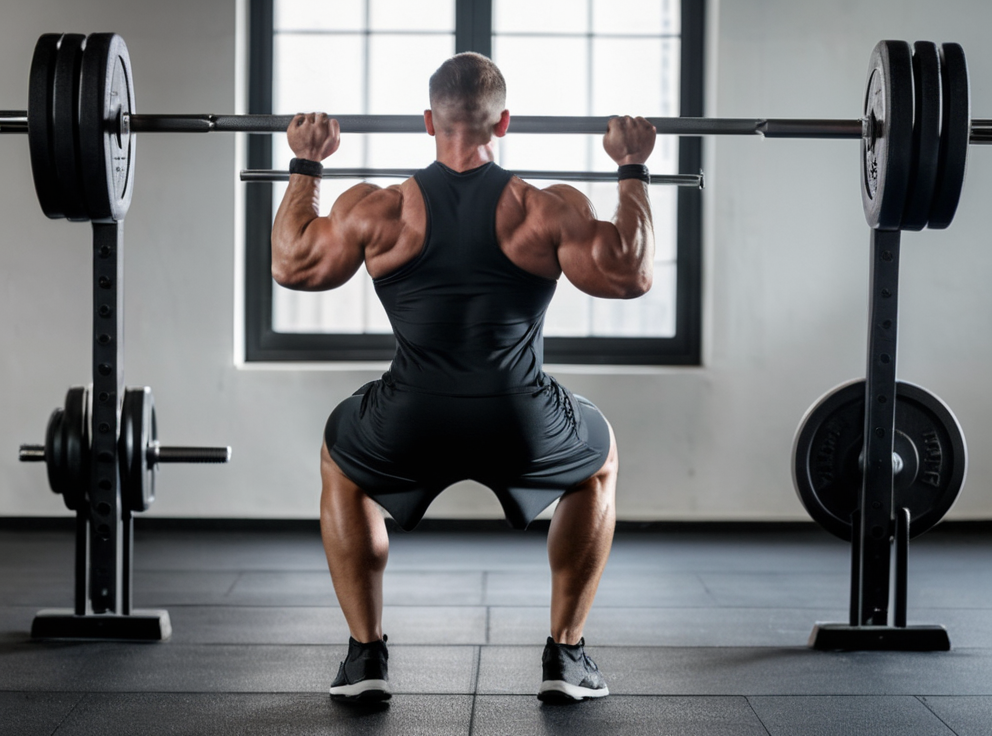
When a Mat Might Be Optional: Weighing the Costs and Benefits
Dans certains cas, la nécessité d'un tapis est moins critique.
- Béton Sols :Le béton est naturellement résistant aux dommages, ce qui rend le tapis moins indispensable. Toutefois, un tapis peut encore améliorer la stabilité et réduire le bruit.
- Garages :L'environnement d'un garage est généralement plus clément et les risques de dommages sont réduits.
- Salles d'entraînement dédiées avec revêtement de sol résilient :Si vous disposez d'une salle d'entraînement dédiée avec un sol en caoutchouc ou similaire déjà installé, un tapis peut s'avérer superflu.
In these situations, a cost-benefit analysis is appropriate. Weigh the price of a mat against the potential risks of damage or noise complaints. If the risks are minimal, a mat might be an optional expense.
Alternatives to Mats: Exploring Other Options
Si les tapis sont la solution la plus courante, d'autres options existent.
- Contreplaqué : A sheet of plywood can provide a solid, level base for the weight bench. However, it offers no cushioning or noise reduction.
- Tapis à usage intensif :Une moquette épaisse peut offrir une certaine protection, mais risque de présenter des creux au fil du temps.
Ces alternatives sont généralement moins pratiques et moins efficaces que les tapis d'haltérophilie, car elles n'offrent pas les avantages de l'amortissement, de la réduction du bruit et de la stabilité.
Conclusion : Faire le bon choix
A mat under a weight bench offers multiple benefits: floor protection, noise reduction, enhanced stability, and increased safety. Whether or not it’s necessary depends on your specific circumstances. Consider your flooring type, your living situation, the intensity of your workouts, and your budget. If you're in an apartment, have delicate floors, or are prone to dropping weights, a mat is virtually non-negotiable. If you have resilient flooring and a dedicated workout space, it becomes a more optional, though still beneficial, investment. Prioritize safety and consider the long-term cost of potential damage against the relatively low cost of a protective mat.
Section bonus : Solutions DIY pour le tapis
For the budget-conscious, consider repurposing thick rubber sheets, interlocking foam tiles, or even using multiple layers of cardboard or heavy-duty padding for a more economical, albeit less aesthetically pleasing, solution. Remember, safety and effectiveness are paramount regardless of your chosen method.
FAQ sur l'utilisation d'un tapis sous un banc de musculation
1. Pourquoi dois-je utiliser un tapis sous mon banc de musculation ?
L'utilisation d'un tapis sous votre banc de musculation protège vos sols des rayures, des bosses et des autres dommages causés par des poids lourds ou une pression constante. Il réduit également le bruit, prévient les vibrations et fournit une base stable, garantissant un entraînement plus sûr.
2. Puis-je utiliser n'importe quel tapis sous mon banc de musculation ou ai-je besoin d'un tapis spécifique ?
Bien que n'importe quel tapis puisse offrir une certaine protection, un tapis spécialement conçu pour l'haltérophilie est idéal. Les tapis en caoutchouc ou en mousse de haute densité offrent une meilleure absorption des chocs, une réduction du bruit et une meilleure stabilité que les tapis domestiques standard.
3. Ai-je besoin d'un tapis si j'ai un sol en béton ?
Les sols en béton sont résistants aux dommages, mais l'utilisation d'un tapis présente tout de même des avantages. Il permet de réduire le bruit, d'améliorer la stabilité de votre banc de musculation et d'ajouter un amorti supplémentaire pour une séance d'entraînement plus confortable et plus sûre.
4. Comment choisir le bon tapis pour mon banc de musculation ?
Tenez compte de facteurs tels que la durabilité, l'épaisseur et le matériau. Les tapis en caoutchouc sont très durables et efficaces pour réduire le bruit. Une épaisseur d'au moins ½ pouce à 1 pouce offre un meilleur amortissement et une meilleure stabilité. Assurez-vous que le tapis est suffisamment grand pour couvrir toute la surface sous le banc de musculation.

